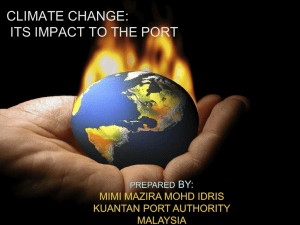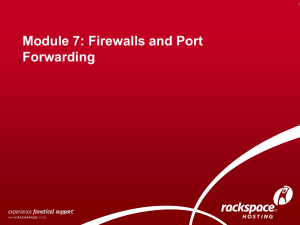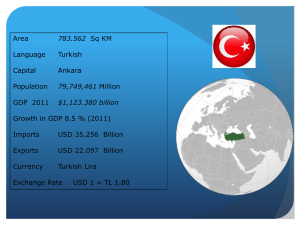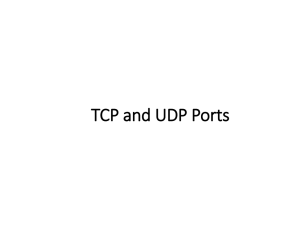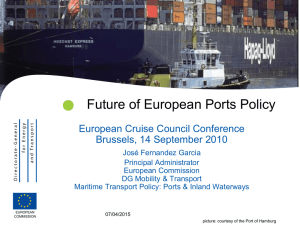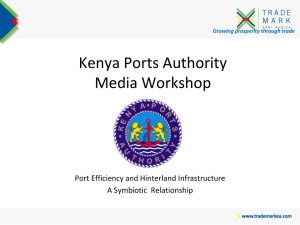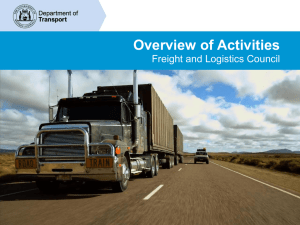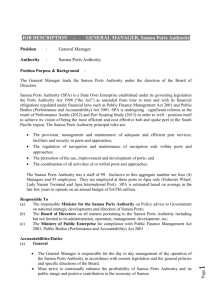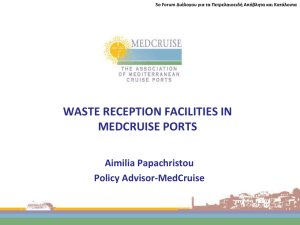GREEN PORTS POLICY
advertisement
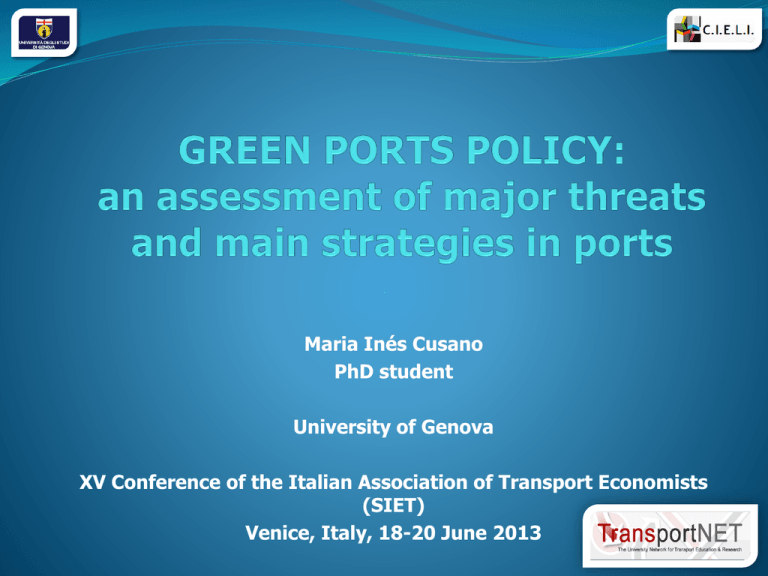
Maria Inés Cusano PhD student University of Genova XV Conference of the Italian Association of Transport Economists (SIET) Venice, Italy, 18-20 June 2013 The Agenda Introduction- Why Green Ports Definition of main goals of Green Ports policies and scope Major threats perceived by ports and some initiatives Air pollution Noise Water pollution Green spill overs for sustainable development? Conclusions and future work Introduction (I) Sea transport is considered to be the less environmentally harmful mode of transport, due to its growing magnitude it requires port activities to develop precautionary actions to ensure its sustainability GREEN PORT POLICIES: to be successful require integrated strategies from both the sea and land side. Focus paper: LAND SIDE Introduction (II) Governments and organizations around the globe began addressing environmental issues in the maritime sector last century mainly as a result of catastrophic events such as oil spills and abandoned vessels. • STRICTER ENVIRONMENTAL 21st CENTURY PORTS REGULATIONS • SOCIAL PRESSURE • GREENER SUPPLY CHAINS •ENVIRONMENTALLY SUSTAINABLE EFFICIENCY Green Ports policy: definition and principles Green Port Policy: “an aggressive, comprehensive and coordinated approach to reduce the negative impacts of Port operations” 5 guiding principles : • Protect the community from harmful environmental impacts of Port operations. • Distinguish the Port as a leader in environmental stewardship and compliance • Promote sustainability. • Employ best available technology to avoid or reduce environmental impacts. • Engage and educate the community. Scoping down the research topic Problems linked to the activities of vessels calling the port (ballast water, emissions, etc.) • Issues caused by the port activities (noise; water pollution, oil spills and antifouling of the ships; waste; hazardous cargos; etc.) Aspects linked to the emissions from inter-modal transport chains serving the port hinterland (emissions, congestion, accidents, etc.). ESPO SURVEY 2009: Noise, Air quality, Port waste main threats for EU ports Air pollution Major air pollutants related to port activities: include diesel exhaust, carbon monoxide (CO), particulate matter (PM), nitrogen oxides (NOx), Volatile organic compounds (VOCs) sulphur oxides (SOx) among others. large cargo, tankers and cruise vessels, equipment such as tugboats and towboats. The majority of the land equipment that is currently used in ports uses diesel fuel such as Cargo- handling equipment, locomotives and trucks, cranes of different kinds, forklifts, yard trucks, etc IMO SOx limitations EU Article 4 b Directive 2005/33 INITIATIVES: Cold Ironing LA/LB: truck restriction of circulation Noise Debate with regard to port area noise management is defining the boundaries of the area to be managed as it is trans-boundary and multi-source. • Port services and facilities, • Terminals (cargo handling, warehousing), • Machinery, workshop, • Vessel repair or maintenance (dry docks), • Berthed Vessels • Transport activities : • Trucks • Trains. initial step should be that of carrying out a noise mapping LA/LB: city noise “ordinances” limit noise-producing activities to 7.00-21.00 on normal days and prohibit them at all during Sundays or national holidays. Rotterdam P A has divided the Rijnmond area in several different zones with an average specific sound emission per square metre for industrial noise Water pollution Ballast water: its exchange is recommended as a voluntary measure by the IMO. LA/LB: ballast water be treated of disinfected to meet specific biological requirements to limit the number of organisms per water volume. The final regulations, which will become effective after 2020, will require the ballast water discharge to contain zero detectable living organisms. Sewage: MARPOL Annex IV- Governments are required to ensure the provision of adequate reception facilities at ports and terminals for the reception of sewage. LA/LB: federal law prohibits untreated sewage to be discharged into US waters and California is working altogether with federal authorities to create no discharge zones in which all sewage discharges would be prohibited. Oil Spills: first response in a port aims at trying to secure the spillage and deploying booms and skimmers to contain the spread. Oil pollution response. Newly build tankers must have double hulls (). Green spill overs for sustainable development? Environmental awareness can have a cumulative nature and it can create spill over effects. Once a company starts to address environmental matters in one area, the interdependent nature of ecological and physical elements can lead towards even broader responses. Spill over between: - different ports in the same range - different sectors in one port - city policies that expand to the port future work Some ports have differentiated their dues in order to provide incentives to ship-owners to use environmentally benign technologies and fuels- Risk: they might lose clients, opportunity: boost greener development Conclusions and future work Considering the amount and range of the environmental issues that are affected by the different port activities, there is a need to formulate a mix of policy instruments. While on the one hand it is believed that more international regulations are necessary, the best practices show that is very effective to apply environmental policies at a province-region-state level because the initiatives are reinforced with a normative law that has punitive nature. There is a need to coordinate policies at different levels, exchange insights on the process that lead some cases to become best practices and enhance the communication with the hosting cities (and its inhabitants) The main goal: establish integrated sustainable policies that might start in the port or in the city but which ultimate goals is achieving a sustainable development of the overall city or region as the environmental challenges that are being faced don’t recognize territorial boundaries. Future work As an Output from the participation in the Lloyd’s Register Foundation Research Collegium on Coastal Eco cities- Southampton July/September- the future plan is to develop an integrated descriptive model of how coastal cities implement sustainable policies (with a focus on ports) and how this can be part of the strategy to become coastal eco cities and face the current and future environmental challenges (PhD thesis) Maria Inés Cusano– cusano@economia.unige.it 13

